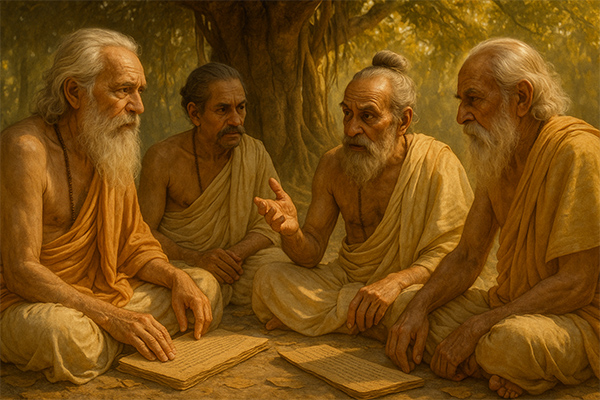
Have you ever been asked your Gotra during a wedding, a religious ceremony, or even while filling out a puja Sankalpa, and wondered why it mattered?
In Hindu tradition, your Gotra is more than just a label, it is your spiritual ancestry, your connection to an ancient seer (Rishi) whose bloodline or teachings flow through you. Long before DNA tests and family trees, Hindus traced their roots back to the Saptarishis, the seven great sages of the Vedic era.
Unlike caste, which relates to profession or social role, Gotra is about lineage, who you descend from, not what you do.
This concept has guided marriage customs, rituals, and identity for thousands of years. But where did it come from? Why are people from the same Gotra discouraged from marrying? Can women inherit a Gotra? Is it still relevant in modern times?
Let’s uncover the mystery and meaning behind Gotra, a term that quietly carries the weight of ancient Vedic civilization into our daily lives.
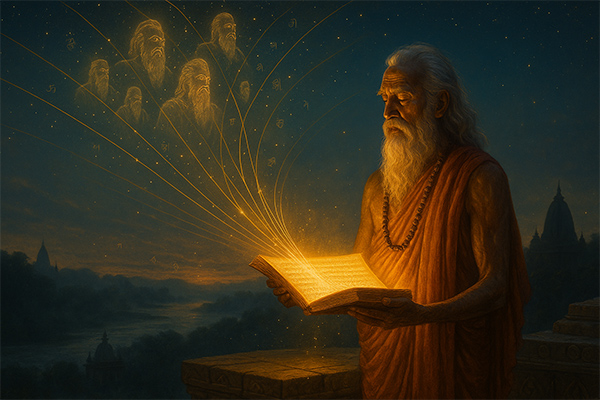
Understanding Lineage in Hindu Tradition
In the Hindu worldview, lineage is not simply a matter of genetics. It is a matter of spiritual continuity. While modern families are traced by surnames and documents, ancient Hindu society preserved identity through Gotra: a sacred thread connecting an individual to a specific sage or Rishi from the Vedic era.
This lineage was not merely biological. It was also intellectual and spiritual. A person belonging to a particular Gotra was seen as a descendant, either by blood or initiation, of a sage whose wisdom shaped entire portions of the Vedas. In this way, Gotra represented a living legacy.
Gotra forms the backbone of Hindu ritual identity. During sacred ceremonies, individuals often declare their name, Gotra, and lineage to invoke blessings from their ancestral Rishi. It serves as a bridge between personal identity and cosmic heritage, allowing one to align with dharma and the Rishi-Parampara (lineage of seers).
In a time when oral memory and dharmic duty were the pillars of civilization, knowing one's Gotra was knowing where one came from, and what energies and responsibilities one inherited.
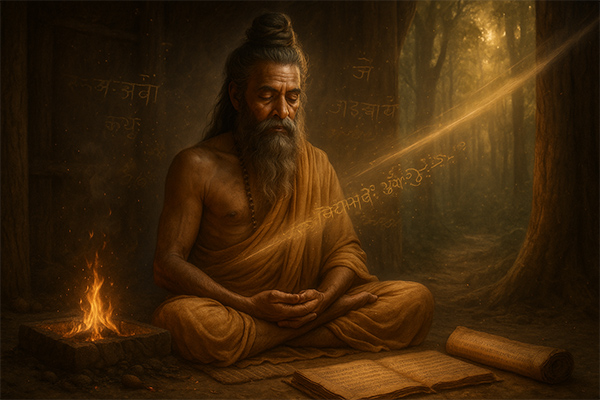
Gotra – A Word That Defines Ancestral Identity
In Hinduism, Gotra signifies a living connection to a Rishi whose vision and discipline shaped the Vedic world. Every Gotra traces back to a sage whose spiritual insight gave rise to a unique lineage of seekers, thinkers, and custodians of dharma.
Rather than defining social status or occupation, Gotra identifies a person by their lineage of learning and sacred memory. In early Vedic society, knowledge was transmitted not just through texts but through generations of disciples, often within the same family or hermitage. These lineages became the foundation of the Gotra system.
What makes this concept unique is that it ties an individual not to a geographical place or clan name, but to a timeless stream of consciousness. A specific sage’s tradition and vibration. This is why during rituals, Hindus recite their Gotra to invoke the blessings of their ancestral Rishi, anchoring the present to a sacred past.
In essence, Gotra is a subtle yet powerful identity marker, a reminder that each individual carries within them the legacy of rishis who lived not for themselves, but for the unfolding of cosmic truth.
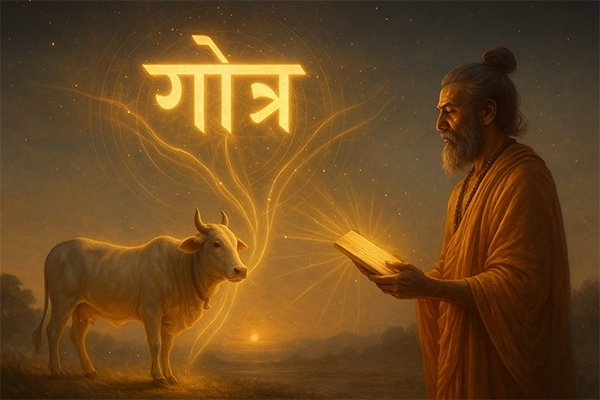
Gotra Meaning and Etymology
The word Gotra is derived from two Sanskrit roots:
‘Go’ (गो) meaning cow, which symbolically represents wealth, protection, and sacredness in Vedic tradition
‘Tra’ (त्र) meaning to protect, to preserve, or to lead across
Put together, Gotra (गोत्र) originally meant “a protective lineage” a metaphysical fence or guiding stream that connects an individual to their primordial spiritual origin, providing both identity and continuity.
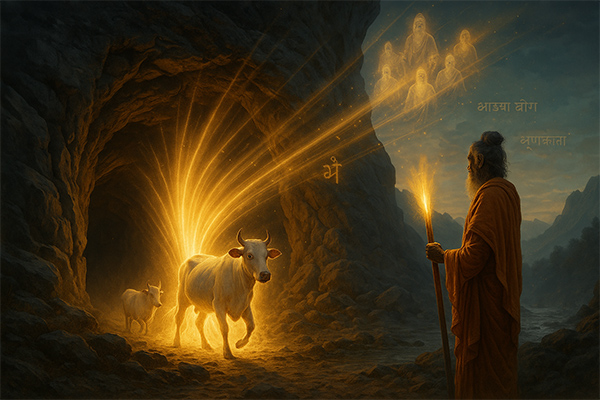
Gotra in Early Vedic Context
In the Rigveda, the term 'Gotra' does not directly refer to family lines, but is used in a metaphorical sense, often describing the breaking open of hidden truths or treasures, like cows being released from a cave. Later, as Vedic society evolved into more settled hermitage-based communities, Gotra came to signify the lineage or house of a sage, and then eventually referred to those descended from or initiated by that sage.
Gotra thus became a marker of spiritual inheritance, particularly among Brahmanas, whose dharma was to preserve and transmit the Vedic wisdom across generations.
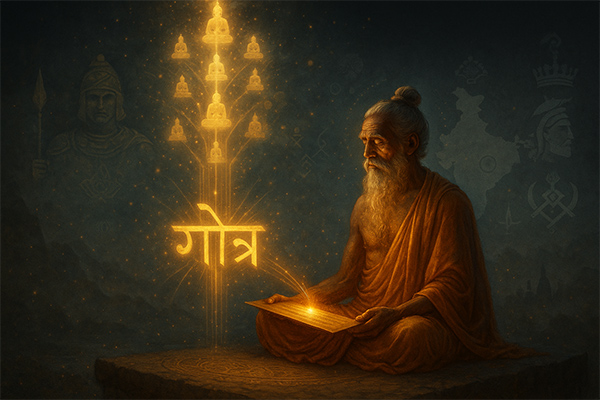
Gotra vs. Lineage in Other Cultures
Unlike the clan systems in other ancient cultures, where lineage was tied to warfare, royalty, or geography, Gotra is purely rishi-centric. It does not point to a warrior ancestor, a place of origin, or a surname, but to a seer of truth, a mind who meditated upon the eternal.
In this sense, Gotra is not a genetic claim, but a metaphysical one.
Even if one is not biologically related to a rishi, they may inherit his Gotra through spiritual initiation or adoption into a lineage. This is particularly relevant for sages whose descendants were more disciples than biological offspring.
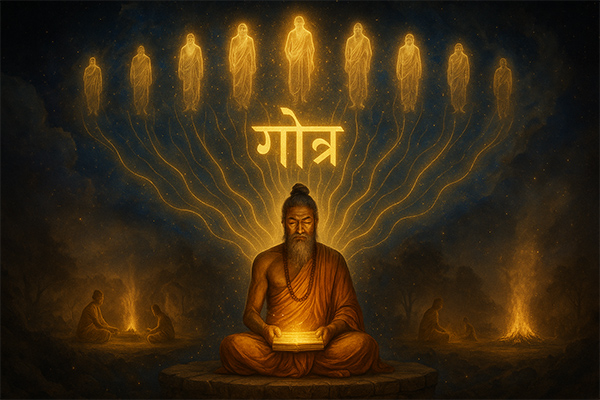
Gotra as a Cosmic Identity
Over time, the term came to define seven (and later more) foundational lineages, each representing a cosmic stream of wisdom passed down through families, rituals, and rites of passage. When a Hindu declares their Gotra, they are not merely stating ancestry, they are evoking a living current of consciousness from which their dharmic journey draws strength.
This is why Gotra is cited during major life rituals like naming ceremonies, marriages, and funerary rites, not just as a formality, but to anchor the event in ancestral continuity and rishi-sourced blessings.
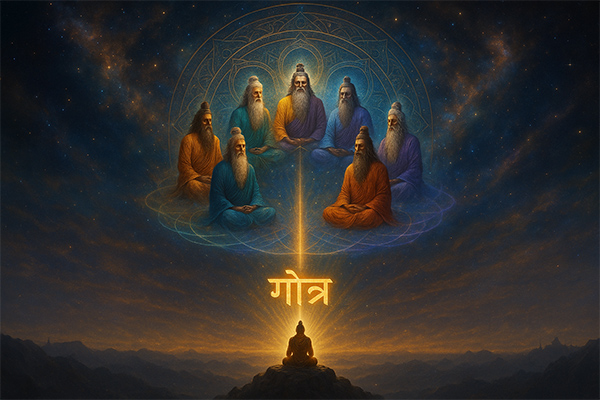
Origin of Gotras from the Saptarishis
The concept of Gotra as a spiritual lineage traces its origin to the Saptarishis. The seven great Vedic sages who are revered as the founding fathers of human dharma and knowledge. These sages are not only historical or mythological figures but also represent eternal archetypes of wisdom, discipline, and divine realization.
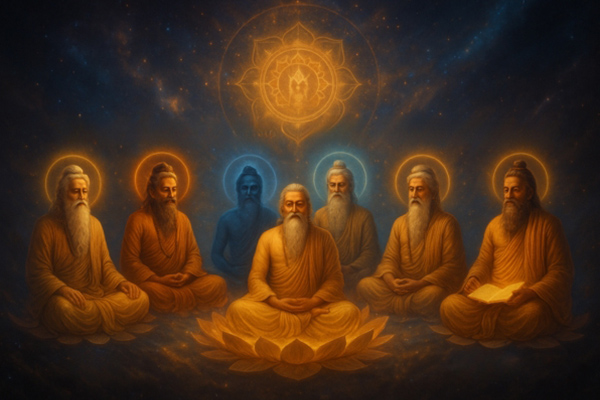
Who are the Saptarishis?
The Saptarishis, as mentioned in various Vedic texts, Puranas, and Smritis, are:
Atri
Bhrigu
Kashyapa
Gautama
Vashistha
Vishwamitra
Bharadwaja
These seven sages were mind-born sons (manasaputras) of Brahma, the Creator, and were entrusted with the duty of preserving Vedic knowledge and guiding humanity.
According to the Brihadaranyaka Upanishad and Mahabharata, these Rishis were responsible for teaching the Vedas, maintaining cosmic order (Rta), and initiating royal and priestly lineages that upheld dharma.
Gotras as Lineages of the Rishis
The descendants of these sages, either by blood or through spiritual initiation, came to be identified by the name of the Rishi. For example, someone belonging to the Atri Gotra is considered a descendant of Sage Atri.
In the Gṛhya Sutras, which lay down domestic rites and rituals, the concept of Gotra becomes prominent. A Brahmana's identity is incomplete without reference to his Rishi’s Gotra and Pravara. A list of 3 to 5 sages who form the ancestral line within a Gotra.
There are originally eight main Gotras, derived from:
Angirasa
Atri
Bhrigu
Kashyapa
Gautama
Vashistha
Vishwamitra
Agastya (in some traditions, Bharadwaja replaces Agastya)
Over time, sub-gotras (upagotras) emerged, often named after prominent disciples or descendants of the original sages.
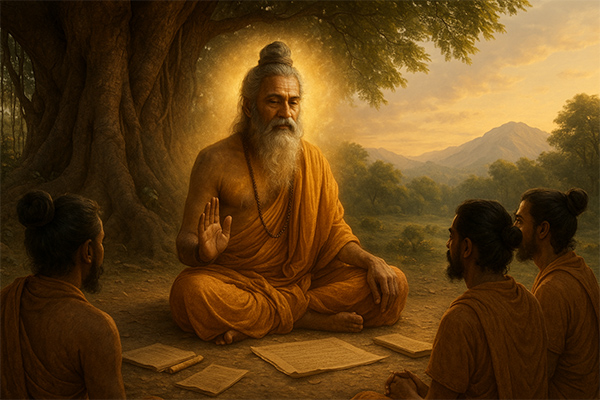
Gotra Is Spiritual, Not Just Biological
It’s important to note that Gotra does not always indicate biological descent. In ancient times, disciples who were spiritually initiated by a sage or admitted into a Rishi’s hermitage (ashrama) were also considered part of that sage’s Gotra.
Thus, Gotra became both:
A biological identity (inherited from the father), and A spiritual affiliation (through the guru-shishya parampara)
This dual nature is what gave Gotra such enduring power in rituals, ethics, and marriage customs, forming the spiritual backbone of Vedic society.
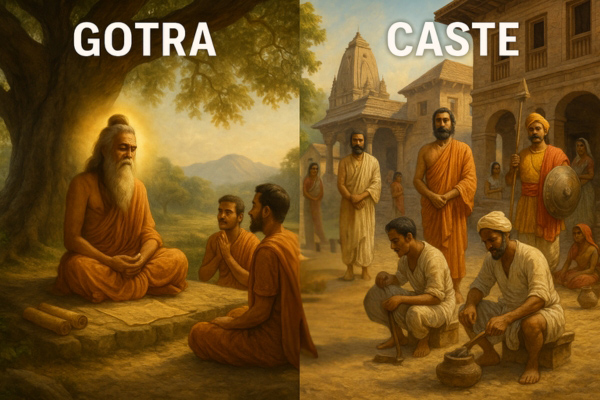
Difference Between Gotra and Caste
In modern discourse, Gotra and Caste are often misunderstood as being the same, but in traditional Hindu society, they refer to entirely different concepts—one rooted in spiritual ancestry, the other in social function.
Gotra: Lineage of a Sage
- Gotra is a lineage marker.
- It indicates descent from a specific Rishi (sage), primarily through the male line.
- It is spiritual and ancestral in nature, and is the same regardless of occupation or social status.
- Every Brahmana, Kshatriya, or Vaishya may belong to a Gotra, even though their caste roles differ, because Gotra reflects origin, not profession.
Gotra is used during religious rituals, such as sankalpa in pujas, weddings, and naming ceremonies, to invoke the blessings of the sage from whom one’s lineage is said to originate.
Caste (Varna/Jati): Social Role and Birth Group
- Caste refers to Varna (class) and Jati (birth group or community).
- Varna is based on qualities and duties, as described in theBhagavad Gita,Brahmana (priests), Kshatriya (warriors), Vaishya (merchants), and Shudra (workers).
- Jati refers to endogamous social groups formed over time, usually tied to a region or profession.
- Caste influences one’s social responsibilities, traditional occupation, and historically, access to certain rights or rituals.
Key Differences at a Glance:
| Aspect | Gotra | Caste (Varna/Jati) |
| Basis | Spiritual lineage from Rishis | Birth-based or profession-based |
| Inherited via | Patrilineal (father’s line) | By community and societal structure |
| Used in | Rituals, marriages, sankalpa | Social identity, occupational roles |
| Changeable? | Fixed, cannot be changed | Sometimes fluid in modern context |
| Universal? | Present across castes | Specific to social classification |
In essence, Gotra is about “where you spiritually come from”, while Caste is about “what your traditional role in society was.” They serve distinct purposes, and understanding the difference is essential to appreciating the depth of Hindu tradition.
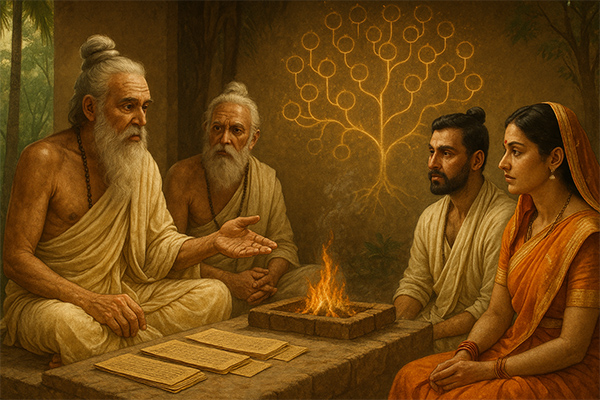
Why Marriage in the Same Gotra Is Avoided
In Hindu dharma, marrying within the same Gotra is traditionally considered adharmic (against natural order) and is strongly discouraged, particularly among Brahmanas and other orthodox communities. This rule is rooted not only in spiritual beliefs but also in biological insight that aligns with modern genetics.
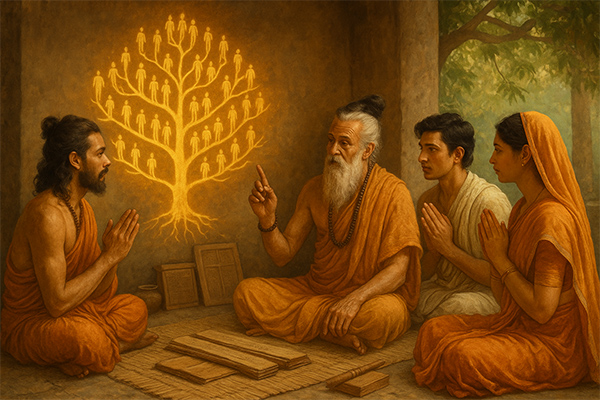
Vedic Belief: Gotra as Shared Lineage
According to ancient texts and Smritis (such as Manusmriti), individuals belonging to the same Gotra are considered to be descendants of the same Rishi. That means they are spiritually and ancestrally 'siblings' in the eyes of dharma.
Marrying within the same Gotra was thus seen as equivalent to marrying within the same family tree, which was a violation of natural and moral law.
'A man must not marry a woman of his own gotra; she is to be considered like a sister.' (Manusmriti 3.5, paraphrased)
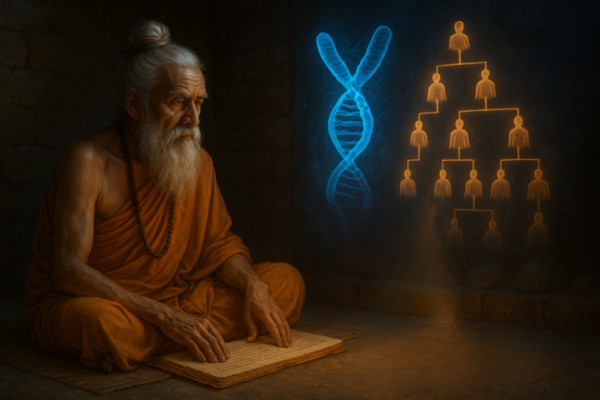
Scientific Reason: Preventing Genetic Disorders
Modern genetics offers a biological rationale for this ancient rule.
Gotra, being patrilineal, is effectively a proxy for tracking Y-chromosome inheritance, which is passed down relatively unchanged from father to son.
Marrying within the same Gotra increases the risk of consanguinity, or genetic similarity, especially if the community has practiced endogamy (marriage within a close group) for generations.
Such close genetic relationships increase the likelihood of recessive genetic disorders manifesting in offspring, similar to what is observed in cousin marriages.
By avoiding same-Gotra marriages, ancient Hindu society may have instinctively practiced what today’s genetic science calls “outbreeding”, a method to maintain diversity in the gene pool and reduce hereditary diseases.
Gotra in Rituals and Daily Hindu Practices
In Hinduism, Gotra is not just a detail on a family tree. It plays a vital role in the ritual identity of an individual. Whether it is a sacred thread ceremony, a wedding, a naming ritual, or a puja, Gotra is consciously invoked as a way to connect the soul with its ancestral and spiritual origin.
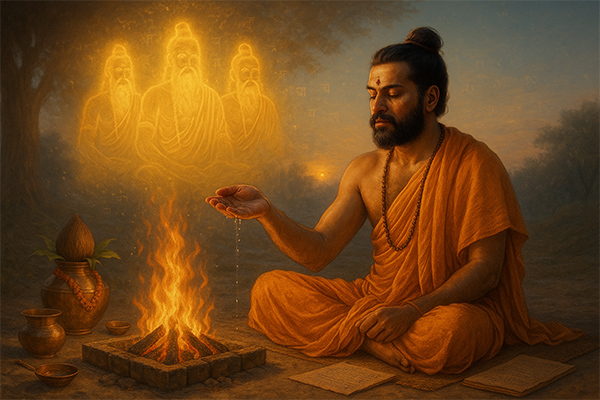
Why Gotra Is Recited During Sankalpa
In almost every Vedic ritual, the first step is the Sankalpa, the sacred declaration of intent. During this, the performer of the ritual states:
- Their name
- Their father’s name
- Their Gotra
- Their lineage (Pravara, if known)
- Their location and time
This recitation spiritually situates the individual within cosmic time and sacred ancestry. By invoking the Gotra, the performer calls upon the blessings and presence of their Rishi-ancestor, thereby sanctifying the act.
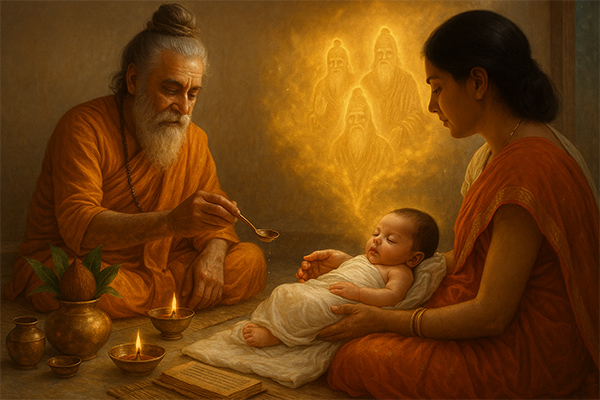
Role in Naming Ceremonies (Namakarana)
During the Namakarana Samskara, the naming ceremony of a child, the priest refers to the child’s Gotra to perform the rituals correctly. The name given often reflects the vibration of the family’s Rishi, helping continue the lineage’s spiritual energy.
Importance in Weddings
Gotra becomes especially crucial in the context of Hindu marriage (Vivaha Samskara). Before approving a match, both families compare Gotras. According to dharmashastra, a marriage within the same Gotra is avoided, as the couple is considered to be from the same spiritual bloodline.
The wedding mantras often refer to the bride’s and groom’s Gotras, symbolizing the union of two distinct lineages and ensuring spiritual and genetic diversity.
Gotra in Ancestor Worship and Shraddha
In Pitru Karya (ancestral rites), such as Shraddha and Tarpana, the Gotra is invoked to ensure that offerings reach the correct ancestral stream. According to belief, the correct invocation of Gotra helps the Pitrs (forefathers) accept the offerings and bless the descendants.
Gotra as a Living Connection
In daily life, one may not think about Gotra often, but in key moments of birth, marriage, death, and prayer, it becomes the spiritual signature that aligns the individual with the cosmic order and dharma.
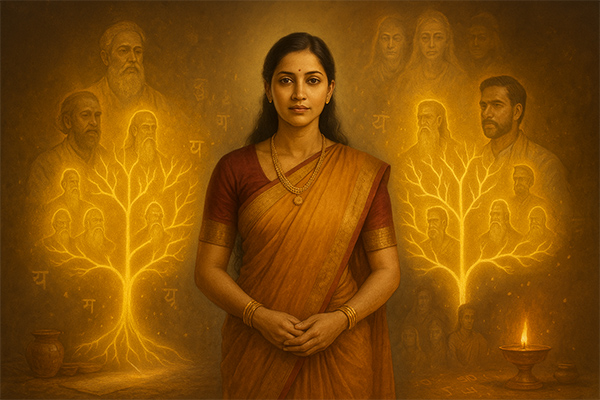
Can Women Inherit or Change Gotra?
In traditional Hindu society, the concept of Gotra is strictly patrilineal, that is, it is passed down through the male line. A woman is born into her father’s Gotra, but after marriage, she typically takes on the Gotra of her husband. This change reflects her symbolic entry into a new spiritual lineage.
However, the relationship between women and Gotra is more nuanced than it may seem.
-
Exceptions in Vedic Texts and Philosophy
While most orthodox traditions uphold the patrilineal model, there are exceptions in Smritis and Puranas where spiritual merit and devotion override birth-based identity.
For example:A spiritually advanced woman or a female Rishi (like Lopamudra or Gargi) was honoured as an originator of knowledge, even though her biological Gotra was not passed on.
In rare spiritual contexts, initiation into a lineage or mantra diksha may associate a woman with a particular Gotra, though this is symbolic rather than genealogical.
-
Women Are Born into a Gotra, But Do Not Pass It On
A daughter inherits her father's Gotra at birth.
But she does not transmit this Gotra to her children, the husband’s Gotra determines the lineage.
In ancient texts and ritual traditions, only men were considered Gotra carriers, because the Vedic lineage was traced through male descendants who preserved and performed the sacred rites.
-
Gotra Change After Marriage
Upon marriage, a woman adopts her husband’s Gotra.
In ritual settings like sankalpa, a married woman uses her husband’s name and Gotra during pujas or samskaras.
This is symbolic of her full inclusion into her husband’s kula (family) and rishi-parampara (ancestral line).
-
In Modern Practice
Today, some women retain their maiden Gotra for personal or spiritual reasons, especially in independent spiritual paths.
However, in most formal Vedic rituals, the woman’s ritual Gotra is that of her husband, as recognized by the priest.
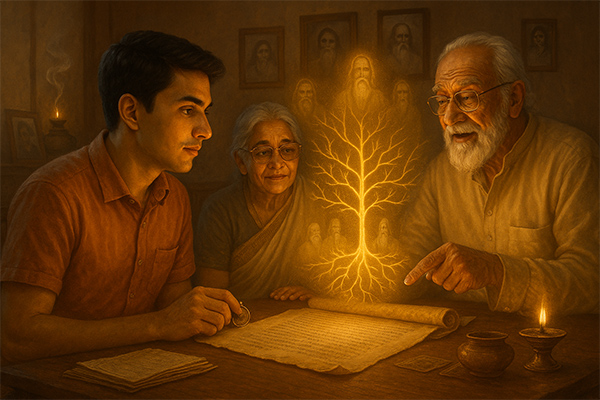
How Can I Find Out My Gotra?
In a time when surnames, IDs, and online profiles dominate personal identity, many people, especially younger generations, find themselves unaware of their Gotra. Yet this spiritual lineage remains a meaningful part of one’s Vedic heritage.
So how do you find out your Gotra?
- Ask Family Elders
The most reliable source is your paternal lineage. Ask your father, grandfather, or paternal uncles, especially those who are familiar with family rituals, samskaras, or who have participated in shraddha, weddings, or yajnas. Gotra is traditionally passed from father to son, and many families still retain this knowledge orally.
- Check Old Family Records or Puja Documents
Sometimes, Gotra is mentioned in:
- Wedding invitations
- Puja sankalpa notes
- Astrological charts (kundli)
- Shraddha papers maintained by priests
- Kula-pustaka or family genealogy registers, especially in priestly or scholarly lineages
- Consult Your Family Priest or Temple
If your family has a kul purohit (traditional priest) or you regularly visit a specific temple, the priest may already have your Gotra on record. In places like Kashi, Gaya, or Haridwar, priests maintain ancestral logs (pandas’ registers) that go back centuries.
- Check Through Astrology (Jyotisha)
In many Vedic kundli (horoscopes), especially those cast by traditional astrologers, the Gotra is listed along with the nakshatra, rashi, and planetary details. If your kundli includes this, it's a direct reference.
- What If You Cannot Find Your Gotra?
If your paternal Gotra is truly lost to memory and record:
Some traditions advise adopting a Gotra through diksha or spiritual initiation.
In rare cases, a priest may assign a Gotra, especially for the sake of performing rituals like marriage or shraddha, typically choosing Kashyapa as a default (due to his vast lineage).
However, it's best to consult with a qualified priest or acharya before adopting any Gotra.
Connect with Your Ancestral Lineage Through Rudra Centre Puja Services
Your Gotra is a bridge to your Rishi ancestors, anchoring your identity in spiritual and cosmic heritage. If you wish to honor this sacred lineage through authentic Vedic rituals, consider Rudra Centre’s professional puja services. Their experienced priests perform traditional ceremonies exactly as prescribed in the scriptures, helping you invoke blessings from your Gotra’s ancestral sages and maintain spiritual continuity.
Click on the link to explore Rudra Centre’s online puja services and book a ritual that resonates with your family lineage and dharmic values.


-in-Astrology.jpg)
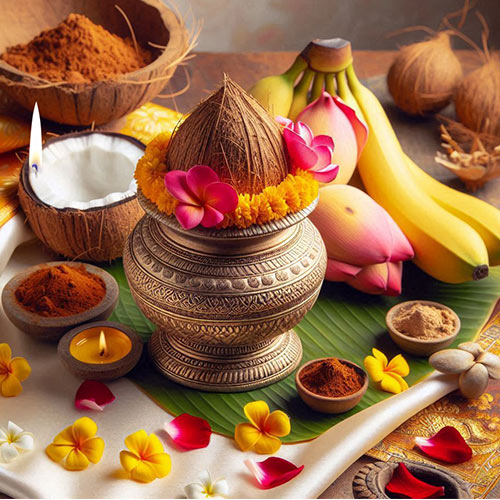
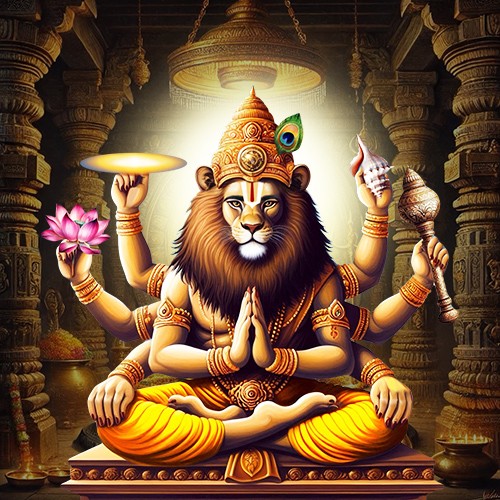
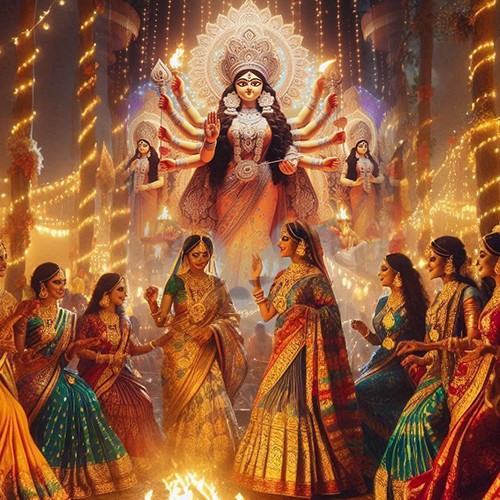
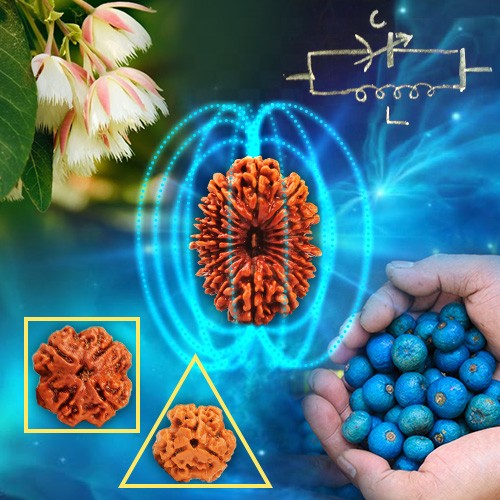

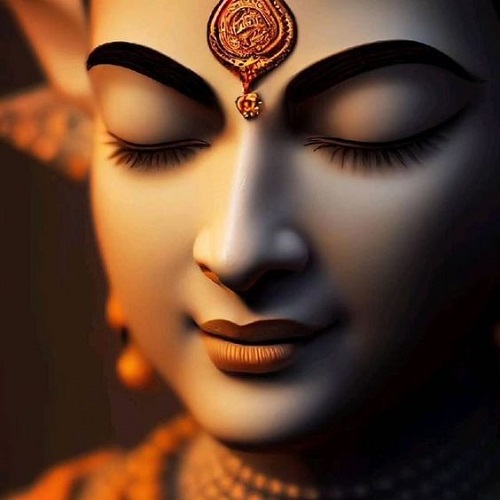
.jpg)
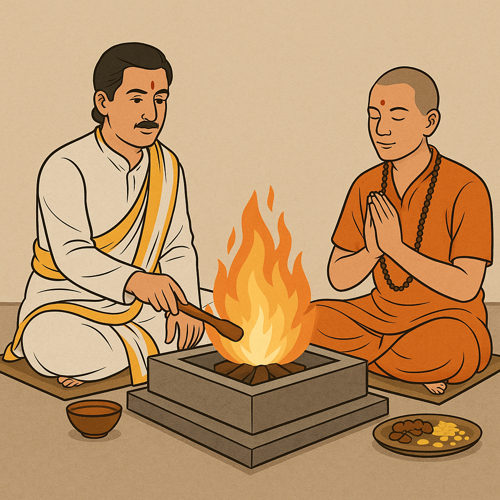
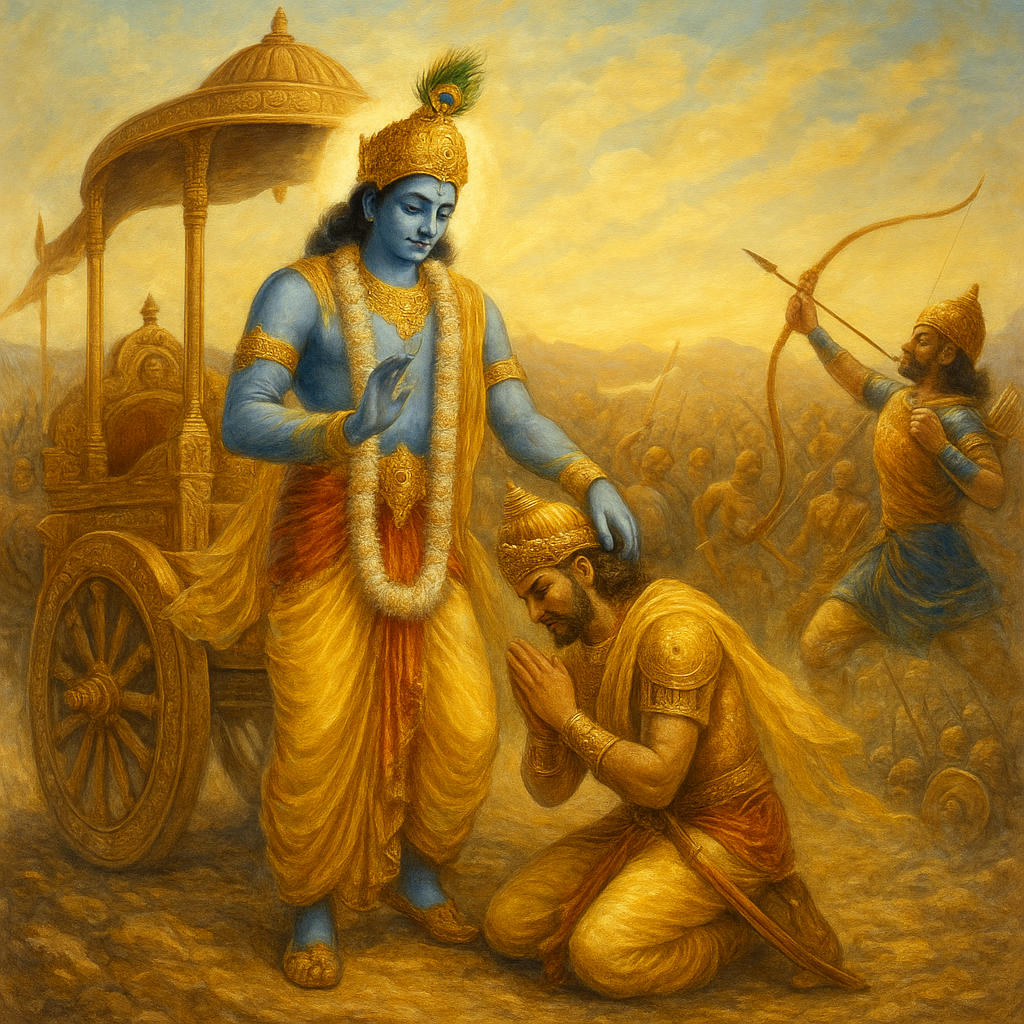
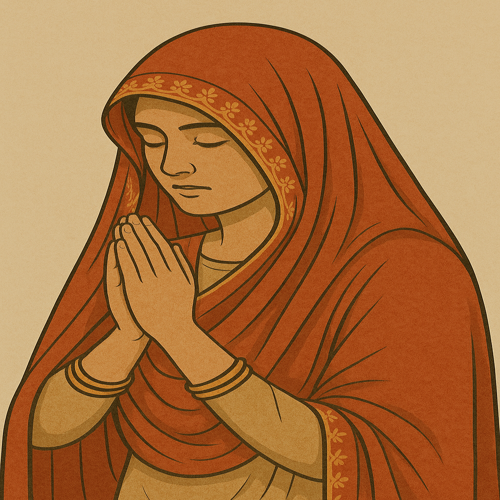
Comments 0
Leave your thought here